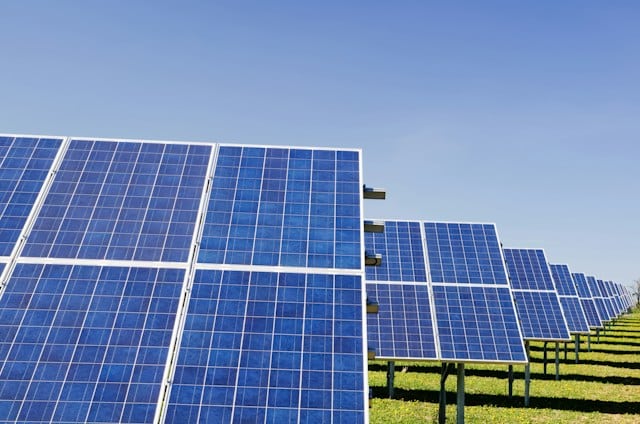Today, we are witnessing a seismic shift in how energy is produced, distributed, and consumed. We are moving away from fossil fuels and towards renewable energy sources. These changes are not merely driven by environmental concerns, but also by technological advances, primarily in the field of Artificial Intelligence (AI). AI is increasingly being used to improve the efficiency, reliability, and sustainability of renewable energy systems. In this article, we are going to delve into the role of AI in advancing renewable energy sources.
AI and Renewable Energy: A Perfect Match
Renewable energy sources, such as solar and wind, are inherently variable. They depend on weather conditions and time of day, making them unpredictable and difficult to manage. This is where AI comes into play. With its ability to analyze large amounts of data, AI can predict energy production and consumption patterns, thereby helping energy providers better manage their grids.
A lire en complément : How Is Augmented Reality Being Integrated into Educational Curriculums for Interactive Learning?
AI algorithms can analyze historical and real-time data on cloud cover, wind speed, temperature, and other environmental factors, and forecast solar and wind power output. This predictive capability is critical for maintaining grid stability and preventing power outages. Furthermore, AI can make renewable energy systems more efficient. For instance, it can optimize the angle of solar panels throughout the day to maximize solar power generation.
Demand Response Management Using AI
Electricity demand varies throughout the day, with peaks during certain periods, such as early evening when people return home from work. Traditionally, power plants have had to ramp up production during these peak times, which is costly and inefficient.
En parallèle : What are the recent developments in the field of chatbots ?
AI offers a more sustainable solution – demand response management. It involves adjusting electricity consumption in response to supply conditions. AI algorithms can analyze energy usage data from smart meters, predict peak demand periods, and send signals to connected devices and systems to reduce consumption during these times. This not only improves grid stability but also helps consumers save on their energy bills.
AI for Predictive Maintenance of Renewable Energy Systems
Renewable energy systems, like any other infrastructure, require regular maintenance to function optimally. Traditionally, this maintenance has been performed on a set schedule, regardless of whether it is actually needed. This approach is not only inefficient but can also lead to unnecessary downtime and repair costs.
AI can help optimize maintenance schedules by predicting when components are likely to fail. It does this by analyzing historical maintenance data and real-time sensor data from the systems. When an impending failure is detected, the system operators can be alerted so that they can take preventive action. This approach, known as predictive maintenance, can significantly reduce downtime and maintenance costs, and extend the life of renewable energy systems.
AI and Energy Efficiency
Energy efficiency is a key aspect of sustainable energy systems. The less energy we waste, the less we need to produce, which in turn reduces the demand for fossil fuels and their associated environmental impacts. AI can play a crucial role in improving energy efficiency.
AI can analyze energy consumption data from buildings, identify inefficiencies, and recommend improvements. For instance, it can suggest the optimal time to run HVAC systems or the best settings for lighting systems to minimize energy use. Furthermore, AI can help design more energy-efficient buildings. By analyzing data on building materials, local climate conditions, and energy use patterns, AI can generate design recommendations that maximize energy efficiency.
The Future of Renewable Energy and AI
The potential of AI in advancing renewable energy sources is vast. As AI technology continues to evolve, we can expect it to play an ever-increasing role in the energy sector.
In the future, we might see AI-enabled microgrids that can autonomously manage the energy production and consumption of a neighborhood or a small town. We might also see AI-powered energy storage systems that can decide when to store energy and when to release it to the grid based on real-time supply and demand conditions.
Furthermore, as more renewable energy systems come online, the amount of data that these systems generate will also increase. This will necessitate the use of more advanced AI algorithms to extract meaningful insights from this data and make our energy systems even more efficient and sustainable.
The journey to a renewable energy future is a complex one. However, with the help of AI, we will be better equipped to navigate this journey and realize our vision of a sustainable and efficient energy future.
Machine Learning in Energy Transition
Machine learning, a subfield of AI, presents a groundbreaking approach to the energy transition. By using complex algorithms, machine learning can find patterns and make predictions based on vast amounts of data, making it an invaluable tool in the renewable energy sector.
Machine learning can be used to optimize energy production from renewable sources. For example, it can analyze weather patterns and predict the optimal times for power generation from wind and solar sources. This optimizes the use of renewable energy sources and reduces reliance on fossil fuels.
Additionally, machine learning can assist energy companies in making informed decisions. By analyzing historical and real-time data on energy consumption, machine learning can predict future energy demands. This allows energy companies to adjust their power generation accordingly, helping to prevent overproduction and energy waste.
In the realm of renewable energy storage, machine learning can also make a significant impact. Energy storage is a crucial element of a sustainable energy system, as it allows excess power to be stored during times of high production and used later when production is lower. Machine learning can predict periods of high and low energy production and consumption, and make real-time decisions about when to store and when to release energy. This not only optimizes energy usage, but also helps to maintain a stable and reliable energy grid.
AI: A Catalyst for the Energy Sector’s Evolution
The shift toward renewable energy sources is a complex process. It requires not only technological innovation, but also changes in policy, infrastructure, and societal attitudes towards energy consumption. However, AI is proving to be a crucial catalyst in this energy transition.
AI is rapidly transforming the energy industry. Its ability to analyze vast amounts of data in real time and make informed decisions is revolutionizing how energy is produced, distributed, and consumed. From predictive maintenance of renewable energy systems to demand response management, AI is helping to make the energy sector more efficient and sustainable.
The role of AI in advancing renewable energy sources will only grow in the future. As more renewable energy systems come online, they will generate more data, which will in turn require more advanced AI algorithms. The integration of AI and renewable energy systems will help to drive the energy industry forward, making it more sustainable and efficient.
In conclusion, AI is not just an accessory to the renewable energy transition – it is a driving force. With its predictive capabilities, real-time data analysis, and decision-making power, AI is helping to shape a future where renewable energy sources are the norm. While there are still challenges to be overcome, we can be optimistic that with the help of AI, we can move toward a more sustainable and efficient energy future.
















